Organise a Content Area (Original)
Overview
Content can be linked directly to a Content Area, organised using folders or organised using Learning Modules. Learning Modules are similar to folders but they contain a submenu of the folder content.
Example: Content linked directly
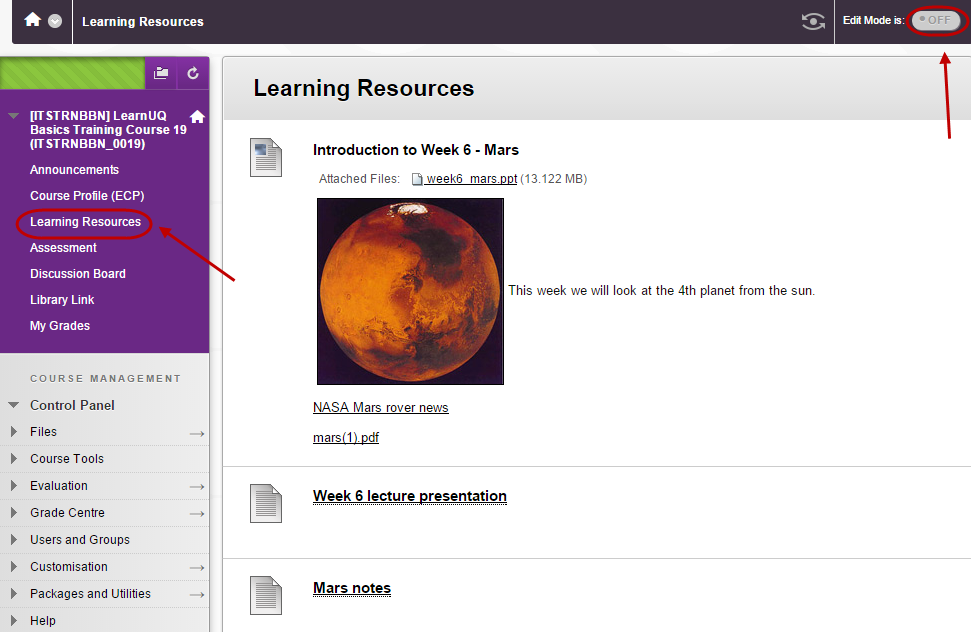
Note: Edit Mode is turned off in the above example.
Example: Using folders
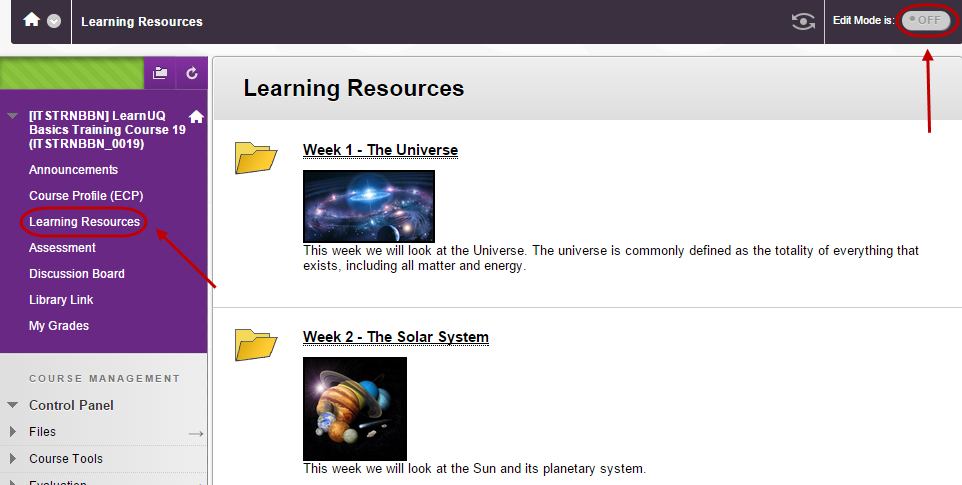
Note: Edit Mode is turned off in the above example. Adding images and text to the folder link is optional.
Example: Inside a folder
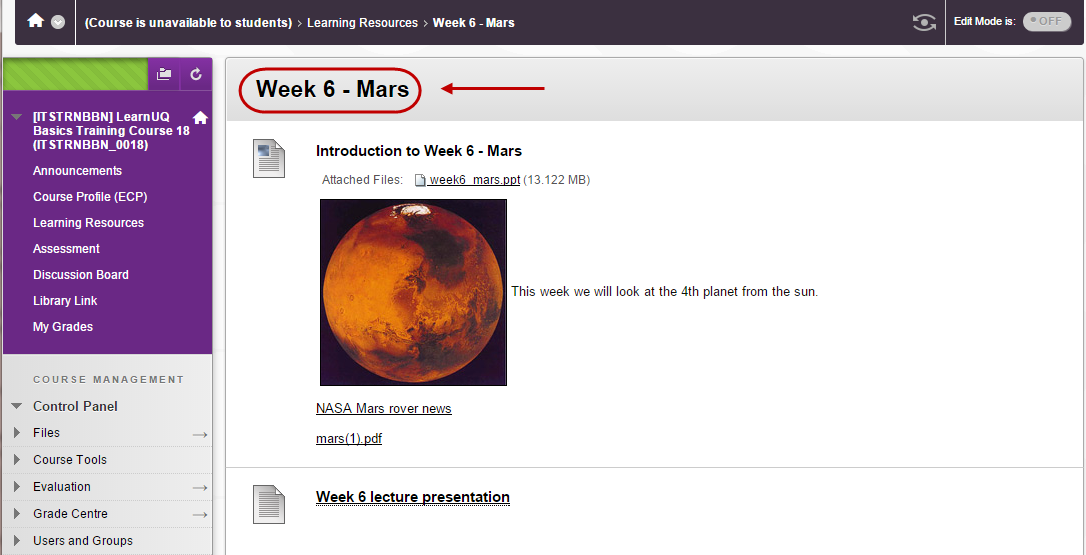
Example: Using Learning Modules
Learning modules presents course material using a table of contents.
Note: All types of content such as item, file, content items, web link, content folder and multimedia links can be included in a learning module.
Students can view contents of a learning module in one of two ways:
- Sequentially: content is viewed in a specific order.
- Non-sequentially: content is viewed in any order.
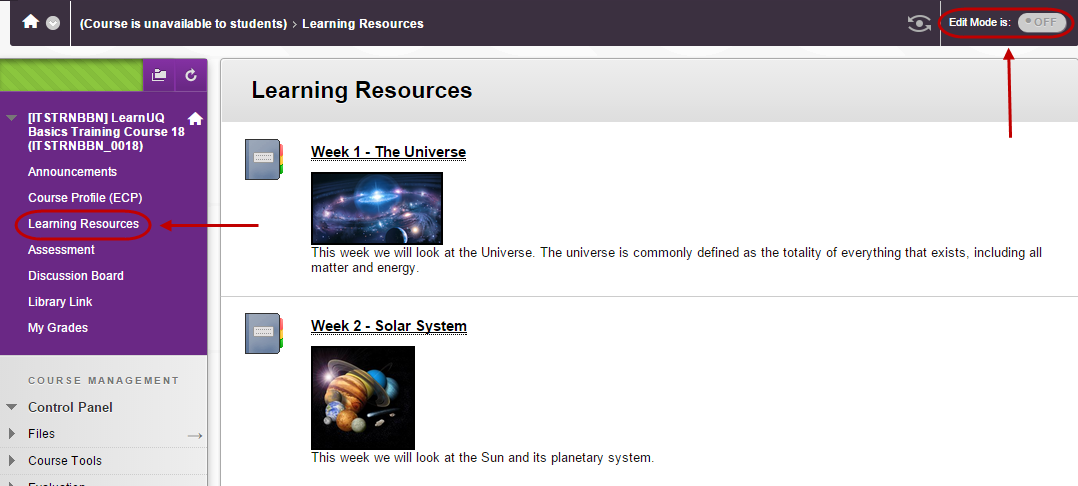
Note: Edit Mode is turned off in the above example. Adding images and text to the Learning Module link is optional.
Example: Inside a Learning Module
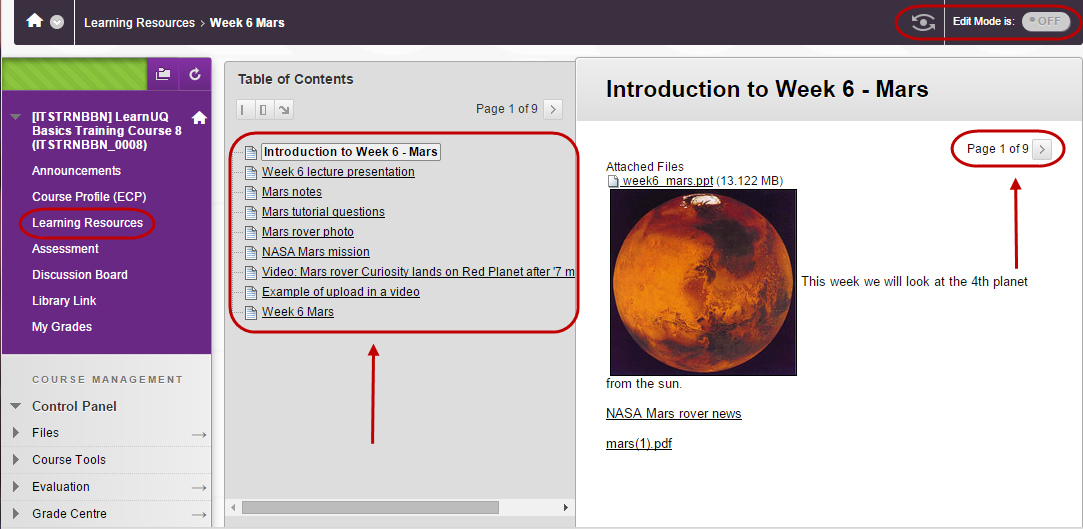
Note: Each resource you add to the Learning Module appears in a separate “page" for the students. When in Edit Mode, the resources are all displayed on the page at once.
Students can navigate by using the Table of Contents or the page arrow in the top right hand corner.
Learning Resources
You can organise the Learning Resources content area using a variety of different structures including:
- By topic
- By week
- By learning resource i.e. Lectures, Tutorials, Readings, Practicals.
Tip: It is recommended that the Learning Resources content area has a similar navigation structure to Learning Activities in the Course Profile.
Assessment
You can organise the Assessment content area with a folder or Learning Module each assessment item.
